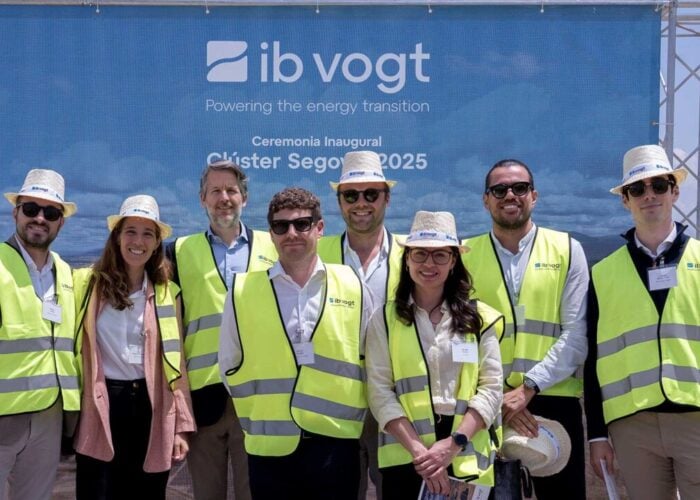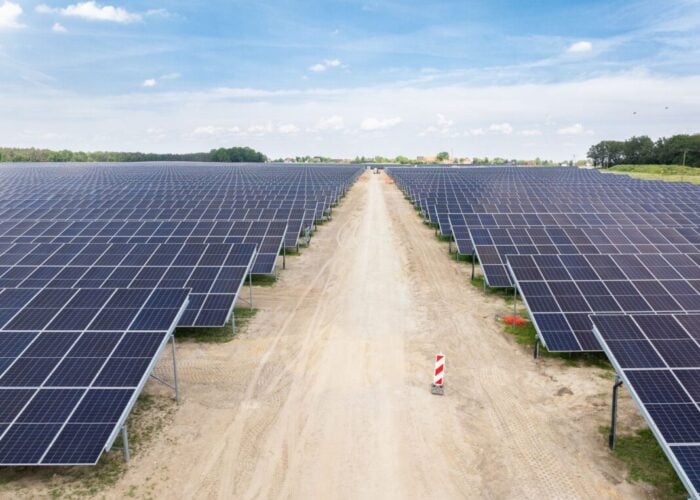This article provides an analysis of global installations/demand and global production/supply according to regions and technologies. The evaluated timeframe includes years 2010 and 2011. An outlook for 2012 is also provided on a best-estimate basis. Specifically, the implications of module shipments in 2011 and 2012(e) are presented. This is in line with an analysis of production capacities, their utilization rates and the corresponding impact on global profit margins.
Current state of the European market
Unlock unlimited access for 12 whole months of distinctive global analysis
Photovoltaics International is now included.
- Regular insight and analysis of the industry’s biggest developments
- In-depth interviews with the industry’s leading figures
- Unlimited digital access to the PV Tech Power journal catalogue
- Unlimited digital access to the Photovoltaics International journal catalogue
- Access to more than 1,000 technical papers
- Discounts on Solar Media’s portfolio of events, in-person and virtual
Although Eurocentric sales figures are not making a major contribution to overall PV market stability, Europe was still the centre of solar demand in 2011. Other markets, especially China and the US, saw strong growth, but this did not have a lasting impact on global demand structure.
The current market structure, which stems from a history of government subsidies and funding, is widely considered unhealthy and not sustainable. The long-term challenges which arise from this have yet to be overcome and the pressure for alternatives is high. In 2011, about 73% or 21.0GWp of all grid-connected systems were installed in Europe. North America and Asia counted for 9% and 14%, respectively. These figures have remained more or less constant over the past three years, with Europe accounting for global installations of between 75 and 82%.
Italy, however, presents a special case: with the phase-out of the ContoEnergia III and the new ContoEnergia IV not yet in place, approximately 3.5GWp of PV installations were realized in Italy under the Salva Alcoa in 2010, but they were grid-connected in 2011. This would translate into a higher actual world PV module demand in 2010, which then exceeded 20GWp with 82% of all demand coming from Europe. This also implies that PV demand in 2011 was not 28.6GWp but approximately 25.0GWp.
This inevitably leads to a higher share of non-European countries in the global demand structure, i.e. Asia, the Americas and the rest of the world. A closer look at demand figures from a technology perspective, i.e. thin film vs. crystalline, shows slight deviations but the overall picture remains, for the most part, unchanged.
In contrast, the supply side of the PV module scenario tells a very different story. Over the past three years, the share of global PV modules manufactured in Europe has been decreasing steadily. Back in 2008, 22% of all PV modules were manufactured in Europe. This share has now dropped to less than 13%.
A similar scenario was played out in North America, especially in the US. Although developments stateside were not as drastic, their share in manufacturing output dropped to 4% of world PV module output. On the other hand, manufacturers in Asia were able to expand their market share significantly. Chinese and Taiwanese companies in particular saw substantial increases in their market share. Indeed, both countries accounted for 62% of global PV module production in 2011. Whereas PV module production in North America was sufficient to meet domestic demand, most of the PV modules produced in China and Taiwan were exported. This can be traced back to the beginning of PV module production in these countries.
However, the tide is turning on this trend with fewer exports recorded in 2011 compared to 2010. While 96% of modules were exported in 2010, last year (2011) saw China and Taiwan export only 88% of their modules. The main reason for this drop was the extraordinarily strong increase of Chinese domestic demand. Although final grid-connection figures for 2011 have not yet been revealed, it is estimated that 2.3GWp of PV installations were realized in 2011.
Similarly to Germany, the Chinese market experienced a strong year-end rally which is largely attributable to the FiT that was introduced in August 2011. This development takes on a new dimension when taking into consideration installations made under Salva Alcoa in Italy in 2010 and means that the export share of PV module manufacturers in Asia has been decreasing since 2010.
Impact for 2012
Now, what impact will the information presented above have on 2012? Along with the latest estimations, the share of Europe in overall PV module demand will shrink. Along with the Italian market, the German market will most likely not see record installation figures again. Other European markets such as France, Spain, the UK and Belgium are expected to shrink this year. This cannot be compensated by growth scenarios in other European countries as volumes are simply too small. Overall, demand in Europe is going to collapse this year. Depending on how installation figures for Italy are interpreted, the market in Europe for PV modules will come down from 21GWp (17.5GWp if demand induced by Salva Alcoa is attributed to 2010) to 12.1GWp.
This is also reflected in the policy goals and the long-term energy needs of Europe. Due to its stable or even shrinking population and the comparably well-developed status, electricity demand is projected not to grow in the foreseeable future. According to the NREAP of each EU27 member, it can be derived that there is an annual sustainable PV market of 10–12GWp up to 2015. Thus, the share of European demand in global PV module demand will drop below 50% this year. By 2015, Europe’s share in global PV module demand will be around 25%, a figure which is likely to continue declining.
This is a remarkable development. It is especially remarkable when one considers that the global PV module market is projected to remain, at the least, stable (when looking at actual demand and not grid connections), or to even increase as there is considerable upside potential in North America and Asia. China, the US and Japan can be considered wild cards in the 2012 game. The share of Asia in annual PV module demand is expected to reach close to 50% in 2015 and the Americas will account for another 20%.
Does this mean that the PV industry in Europe has reached a breaking point and that the painful process of consolidation that is becoming apparent among PV module manufacturers will spread to other parts of the industry? Most likely not. On the one hand, there is no future for mass PV module manufacturing in Europe apart from special niche applications (Asian manufacturers produce modules with the same quality for a much lower price). On the other hand, Europe has one major advantage: experience.
Currently, 78% of world cumulative PV capacity is installed in Europe. EPC companies have established efficient processes and are now able to deploy large PV parks in a very short time. These companies have also gathered very valuable knowledge in O&M of these parks, which in turn makes them a credible partner for future PV installations in non-European markets. An abundance of services which have evolved from the building and maintenance of existing parks are currently being developed further and/or refined. These range from ex-post power optimization to new, innovative ways of operating these parks. Even the financial industry can capitalize on this experience. With a considerably large base of parks on the secondary market and infrastructure and pension funds aggressively moving to incorporate PV into their portfolios, new solutions in the financing and transaction business are needed.
It is also true that with the industry’s focus shifting away from Europe, experience will be gained in other parts of the world. The rise of Asia and the Americas in the PV world marks the start of this development; European equipment manufacturers, it could be said, were the first to deal with this situation. Currently, inverter and other system component manufacturers are also facing this challenge. Their long-term success has yet to be proven. When it comes to downstream players, EPCs were among the first to respond to this changing market environment.
As a matter of fact, job creation in major PV markets in Europe has currently come to a halt. According to the DIW (DeutschesInstitutfürWirtschaftsforschung), employment levels in the green energy industry will stagnate in Germany in 2012. This development is not only reflected by manufacturers filing for bankruptcy, but also in the fact that major EPCs such as Solarhybrid have suffered a similar fate. It remains to be seen whether Europe’s downstream PV industry will be able to rise to this challenge and meet it with viable, sustainable alternatives.
The year 2012 is a clear turning point for the entire industry. However, the true turning point was seen in 2011, when global demand began to shift and China began to develop a strong domestic market.
All information presented in this article is derived from EuPD Market Tracker and Manufacturers Monitor. A follow-up article will be published soon and will focus on current trends in pricing, module shipments and implications for manufacturers.







